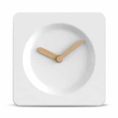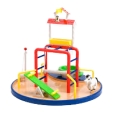Bruises, cuts, scrapes, and falls are inevitable milestones in every child’s journey of growing up. These experiences teach our children resilience while allowing us to provide the care and support they need during life’s little mishaps. As parents and caregivers, we must shield our children from harm as much as possible. However, accidents happen, and swift action helps minimise damage and alleviate pain.
Understanding and learning about common dental emergencies in children ensures you don’t panic and take the right action in case your child happens to land in one. Learn the most common dental emergencies in children to help you protect your little one’s dental and physical needs when accidents and mishaps occur.
13 Common Children’s Dental Emergencies
Some of the most common dental emergencies for children include:
- Cut or Bitten Tongue, Lip or Cheek
Children often accidentally bite their tongue, lips, or inner cheeks during chewing or playing. To take care of such bites, rinse your child’s mouth with warm water and apply an ice pack to the outside of the bitten area. This will help with the swelling and pain. If there’s bleeding, apply pressure with a gauze or clean cloth. Deep cuts extending over the lip or tongue may require medical attention and stitches, so it’s best to consult a doctor straight away.
- Knocked-Out Baby Tooth
When a baby tooth gets knocked out prematurely, it can be alarming for both children and parents. Rinse your child’s mouth with warm water and apply a clean cloth or gauze to control bleeding, if any. Do not try to reinsert the tooth, as it can disrupt the growth of the permanent tooth. Always consult a dentist to ensure no further treatment is required.
- Knocked-Out Permanent Tooth
If your kid’s permanent tooth gets knocked out, swift action can help increase the chances of reinsertion. Carefully pick up the tooth, avoiding touching the root, and rinse it gently with milk, saline or in the patient’s saliva if it’s dirty. Try not to get the root side wet, and always handle the tooth from the crown side. Try to reinsert the tooth back into the socket, if possible. If not, place it in a cup of milk or saliva to prevent the dehydration of the root surface and seek immediate dental attention. Visit your dentist ASAP because the sooner the tooth is reimplanted, the higher the chances of success.
- Fractured or Chipped Tooth
A fractured or chipped tooth is one of the most common dental injuries in children. It can happen during sports accidents such as falling off the bicycle, or simply banging into a hard object. The chip can be minor or a crack extending to the root. Sometimes the tooth can break into pieces. Don’t panic. Apply a cold compress to manage the pain, control the bleeding with gauze, and if the tooth is broken, collect the fragments and seek professional dental help immediately.
- Dental Intrusion
Dental intrusion refers to the displacement of a tooth into the jawbone, causing it to be pushed further into its socket. It can happen because of a forceful impact or trauma to the mouth area. When a tooth is intruded, it appears shorter than the surrounding teeth and may seem sunken into the gumline. The extent of intrusion can vary, ranging from a partial displacement to the complete submergence of the tooth into the jawbone. The severity of the intrusion injury can affect the surrounding tissues, including the periodontal ligament and the bone supporting the tooth. Dental intrusion is considered a dental emergency that requires immediate attention from a dentist.
- Potentially Broken or Fractured Jaw
If you suspect your child has a broken or fractured jaw, it is essential to immobilise their head and jaw using a towel, scarf, or any available fabric as makeshift support. Apply a cold compress to reduce swelling and seek immediate medical attention. Do not try to move the jaw or realign it yourself, as this can worsen the injury.
- Severe Blow to the Head
A severe blow to the head can potentially result in dental trauma. If your child experiences a head injury, monitor them closely for signs of concussion or altered consciousness. Vomiting, unconsciousness, uncontrollable bleeding, confusion, dizziness and severe headaches are all symptoms that need immediate medical attention. Run to the nearest hospital for emergency care to assess the overall impact of the injury and receive the required medical and dental treatment.
- Severe Toothache
A persistent and severe toothache can indicate an underlying dental problem. Cleanse the affected area with warm water and gently floss around the tooth to remove any food debris that may be causing the pain. If the pain persists, consult a dentist as soon as possible to diagnose and address the root cause of the toothache.
- Tooth Sensitivity
Tooth sensitivity in children can cause discomfort when consuming hot or cold foods and beverages.. If the sensitivity persists or worsens, it could be because of a cavity or an injury. The only way to find out is to visit the dentist to avoid further pain if it worsens.
- Dental Abscess
A dental abscess is dental infection that can occur around the root of a tooth or in the gum tissue. If your child complains of severe tooth pain or has facial swelling, breathing difficulties and fever, it may be due to a dental abscess. Contact your dentist immediately for proper diagnosis and treatment before the infection spreads further.
- Lost or Loose Fillings
If your child’s dental filling becomes loose or falls out, it can expose the sensitive inner parts of the tooth, causing toothache and sensitivity, and increasing the risk of cavities in the unprotected area. Schedule an appointment with your dentist to get the filling replaced. In the meantime, keep the area as clean as possible, avoiding sugary and sticky foods to prevent bacterial growth.
- Bleeding Gums
While occasional mild gum bleeding during brushing or flossing can be normal, persistent or excessive bleeding may indicate gum disease or other dental issues. Ensure your child maintains a consistent oral hygiene routine, including regular brushing and flossing. This can help remove the bacteria without dental intervention. Look for signs of plaque buildup (a pale yellow sticky substance) and bad breath. If the plaque penetrates the gum line, it can lead to gum inflammation, making the gums bleed. Book a dental checkup for your child for the correct diagnosis and treatment.
- Tooth Eruption Problems
Sometimes, children may experience difficulties with the eruption of their permanent teeth. This can include delayed eruption, teeth growing sideways, baby teeth not falling out and blocking the eruption of permanent teeth or overcrowding. If you notice any abnormalities or concerns with your child’s tooth eruption, consult a dentist for an evaluation and appropriate guidance.
At Boon Dental, we can guide parents with early orthodontic intervention, detecting such issues at a young age. This helps reduce the need for extensive future treatments, gently guiding the developing teeth and jaws towards the correct alignment with orthodontic appliances.
How to Prevent Dental Emergencies in Children
Dental emergencies can happen anywhere, anytime. There’s no way to predict or prevent them. The only thing you can do is educate yourself and your children on oral hygiene and dental care, understanding the symptoms of dental emergencies that can be avoided, such as gum disease, tooth damage or decay.
As an aware and informed parent, you will have the knowledge to act quickly and correctly, minimise damage, and help manage pain for your child. You will also be able to recognise the signs of orthodontic or tooth eruption problems and realise when help is required. Early detection and timely treatment can make a world of difference when it comes to dental problems in children.
Quality Dental Care for Children Sets the Foundation for a Healthy Adult Smile
While dental emergencies may not be in anyone’s control, maintaining good oral hygiene and health is in your hands. Teaching your children proper oral hygiene practices like brushing twice daily and flossing to remove the food trapped between the teeth helps protect their teeth and gums from a young age. Visiting the dentist for regular checkups helps develop a positive relationship, helping detect potential dental problems for early treatment and preventive care. Children and parents both benefit from dental visits, getting the guidance and education they need, such as using age-appropriate tools and products, correct brushing techniques, as well as answers to any concerns you may have for your child.At Boon Dental, we offer a comprehensive range of paediatric dental services for children, from their first dental checkup and dental fillings to fissure sealants and root canals for children. With a team of friendly and gentle dentists and dental treatments tailored to your child’s needs, we’re here to help keep your kid’s adorable smile shining with health. Book a consultation at our Wentworth Point or Ropes Crossing Clinic today.











